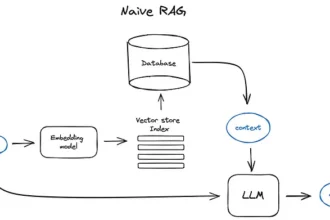Are you ready to dive into the explosive world of gradients? Brace yourself for a mind-blowing journey as we unravel the mysteries of the Gradient Explosion phenomenon. From understanding its causes to preventing it, we’ve got you covered. Whether you’re a data scientist, a machine learning enthusiast, or just curious about the inner workings of algorithms, this blog post will take you on an exhilarating ride. Get ready to conquer the Shattered Gradients Problem, overcome Vanishing and Exploding Gradient Problems, and explore the different types of Gradient Explosions. So, fasten your seatbelts and let’s embark on this thrilling adventure together!
Table of Contents
ToggleUnderstanding Gradient Explosion
In the labyrinthine world of machine learning, one might encounter the formidable obstacle known as gradient explosion. Picture a neural network as a delicate ecosystem, where each connection is a thread in a complex web. The gradient is akin to the wind that whispers changes through these threads, guiding the network’s learning process. However, just as a gentle breeze can turn into a destructive gale, gradients can swell uncontrollably, transforming from a guiding force into a source of chaos.
Imagine a neural network with n hidden layers, a multi-leveled structure where knowledge is distilled through each layer’s sieve. In this intricate architecture, gradients are calculated and multiplied layer by layer, a chain reaction of derivatives. When these gradients are ideally balanced, learning is harmonious and effective. But when imbalanced, the product of these derivatives can soar exponentially, leading to a gradient explosion. This is not a mere inconvenience but a critical problem that can destabilize the model, causing it to learn nothing but the cacophony of numerical instability.
What sets off this cascade of ever-amplifying gradients? The culprit lies in the weights of the neural network. These weights, when involved in the calculation of gradients, can create a product of numbers. If this product consistently exceeds one, the gradients can multiply rapidly, becoming colossally large and unwieldy.
| Cause of Gradient Explosion | Detection of Gradient Explosion | Solution to Gradient Explosion | Overcoming Vanishing and Exploding Gradients |
|---|---|---|---|
| Due to multiplication of large weight derivatives in the network. | Model’s poor performance and unstable learning loss on training data. | Implementing gradient clipping to cap derivatives. | Replacing sigmoid with ReLU activation functions. |
To unearth whether a gradient explosion is wreaking havoc within a model, one must observe its behavior closely. Like a detective, you may notice the model faltering on training data, a telling sign of instability. Furthermore, if the learning loss zigzags wildly, it signals that gradients are not merely flowing but erupting, an unmistakable hallmark of this phenomenon.
Once detected, the question becomes how to quell this explosion. The answer, quite ingeniously, is gradient clipping. This technique acts like a safety valve, capping the derivatives at a threshold. Through this method, the gradients are restrained, tamed into a form that is conducive to stable weight updates and healthy learning.
Another avenue to address both vanishing and exploding gradients is to reconsider the activation function. The once-popular sigmoid function has fallen out of favor, replaced by the more robust Rectified Linear Units (ReLU). ReLU functions possess the unique ability to maintain a positive linear output for positive inputs, safeguarding the network from the perils of gradient anomalies.
By understanding and mitigating gradient explosion, we ensure our neural networks remain effective tools, capable of learning from data rather than being overwhelmed by it. As we progress into the next sections, we will delve deeper into the causes of gradient explosion, strategies for prevention, and the broader spectrum of gradient-related challenges.
Cause of Gradient Explosion
Imagine you’re inflating a balloon, each breath you take represents the weight derivatives in a Neural Network. Just as too much air can cause the balloon to burst, in the realm of neural computation, an analogous phenomenon occurs known as gradient explosion. This event is not a whimsical act of the activation functions but a result of the network’s weights. Each weight is tethered to a gradient, mirroring a chain of multipliers. When these multipliers consistently exceed the value of one, they can send the gradient soaring to astronomical levels.
To elucidate further, the architecture of a Neural Network is akin to a complex tapestry, woven together by numerous weights. These weights are the fulcrum upon which learning pivots. During the backpropagation process, gradients are computed to update these weights, ensuring the network learns accurately from the data it’s fed. However, a gradient explosion is like a storm in this learning process, where the product of these gradients rapidly escalates beyond control, leading to a chaotic and unstable learning journey.
Such a tempest of gradients disrupts the network’s ability to converge to a solution, similar to how a navigator would struggle in a storm-tossed sea. The tumultuous nature of the gradients can cause the learning process to veer off course, manifesting in volatile loss functions and unpredictable performance on training data.
To detect this brewing storm within the network, one must be vigilant of specific signs. A keen eye might notice when the model’s performance on the training data is not up to par, marred by erratic behavior. Furthermore, the learning loss – an indicator of how well the network is adapting – may exhibit large and volatile swings, signaling that the gradients have indeed exploded.
In the quest to tame this explosion, practitioners of the machine learning craft have devised several strategies. These methodologies are not only preventive but also act as a beacon, guiding the network back to the serene waters of stability. One such solution, gradient clipping, acts as a safeguard, placing a threshold that the gradients cannot exceed, thereby keeping the learning process in check.
As we delve deeper into the nuances of neural networks in the following sections, we will explore the intricacies of shattered gradients and the various methodologies to prevent the catastrophic effects of gradient explosion, ensuring a smooth and stable learning trajectory for our computational models.
The Shattered Gradients Problem
Imagine trying to listen to a symphony in the midst of a cacophonous storm; the music is there, but it’s lost in a barrage of noise. This is akin to the challenge neural networks face with the shattered gradients problem. As the complexity of a neural network increases, especially with added depth, the gradients—that precious feedback used for learning—can become distorted, erratic, and effectively meaningless. This phenomenon is much like white noise, a static of numerical gibberish that drowns out the instructive patterns the network desperately needs to discern to improve.
This problem is particularly insidious because it creeps up silently as the network deepens. It’s a silent saboteur of progress, turning the delicate task of adjusting weights into a wild guess. But there is a glimmer of hope in this seemingly dim situation. Residual networks, or ResNets, have emerged as a beacon, cutting through the chaos. These cleverly designed architectures incorporate so-called “shortcut connections” which allow gradients to flow through the network more freely. It’s as if ResNets build bridges over the turbulent waters, ensuring the gradients aren’t shattered against the rocks of deep layers.
Why is this significant? Because the resilience of ResNets to the shattered gradients problem makes them a powerful tool in the machine learning arsenal. They are like the reinforced concrete in the foundation of a skyscraper, allowing neural networks to reach new heights without collapsing under their own complexity. This remarkable trait of ResNets has paved the way for deeper, more sophisticated networks that can learn from vast amounts of data without succumbing to the white noise of shattered gradients.
By understanding the nuances of this gradient issue, we move a step closer to building neural networks that are not just deeper, but also more reliable and efficient learners. The path forward is not without its challenges, but the solutions, like ResNets, suggest that with thoughtful design, the maze of deep learning can be navigated successfully.
Preventing Gradient Explosion
Imagine you’re on a thrilling rollercoaster ride through the training landscape of a neural network. Just like a coaster, the training process has its ups and downs, but suddenly, you’re faced with an unexpected steep climb—this is akin to a gradient explosion. It’s a scenario where the gradients grow exponentially instead of maintaining a steady pace, potentially derailing your model’s learning journey.
Thankfully, akin to the safety harnesses on a rollercoaster, we have mechanisms in place to prevent such precarious situations in machine learning. Gradient clipping steps in as the hero, acting like a brake system for our metaphorical ride. It takes the reins on the derivatives—those steep climbs—and caps them to a predetermined threshold. By doing so, it ensures that the gradients remain within a manageable range, avoiding the risk of numerical chaos.
To put it technically, when the gradients exceed this threshold, they are simply scaled down proportionately to ensure they stay within the safe zone. This technique is a form of careful moderation, ensuring that the model’s weight updates are significant enough to learn effectively, yet not so large that they cause instability. It’s a delicate balance, but one that can be the difference between a successful model and a runaway algorithmic disaster.
Incorporating gradient clipping into the training process is an act of predictive maintenance for our learning models. It’s a way to preemptively combat the chaos before it takes root, enabling practitioners to maintain control over the learning trajectory. By preventing the explosion of gradients, we safeguard the integrity of the learning path and ensure that our models reach their destination: optimal performance.
Detecting a gradient explosion can often feel like diagnosing an elusive illness, but certain symptoms can give it away. For instance, when the model’s performance on the training data starts to deteriorate inexplicably, or when the learning loss begins to fluctuate wildly, it’s time to consider that you might be dealing with an unstable learning curve—clear indicators that the gradients might be spiraling out of control.
Employing gradient clipping is just one of the strategies to maintain the health of our neural networks. As we progress in this journey, we’ll delve deeper into the tools and techniques designed to circumvent both the vanishing and exploding gradient issues, ensuring that our models can learn with the resilience and robustness required to tackle increasingly complex problems.
Overcoming Vanishing and Exploding Gradient Problems
The journey of a neural network’s learning process can sometimes be fraught with perils akin to navigating a treacherous mountain pass. Among these challenges, the vanishing and exploding gradient problems stand out as towering cliffs, threatening the ascent of machine learning models towards peak performance. In the quest to scale these obstacles, data scientists have devised ingenious strategies, much like intrepid climbers finding new paths over seemingly insurmountable crests.
One such stratagem involves a pivotal shift in the choice of activation functions within the network. Imagine activation functions as the enzymes of the neural network, catalyzing the transformation of input signals into outputs that will ultimately dictate the next layer’s actions. Traditionally, the sigmoid function played the role of this catalyst, but it proved to be double-edged. While it smoothly bounded the outputs, it also led to gradients either tapering off into oblivion or ballooning uncontrollably.
To counteract this, the introduction of the Rectified Linear Units (ReLU) heralded a new dawn. Like a burst of energy on the upward climb, ReLU’s simplicity—offering a direct proportional output for positive inputs while nullifying the negative ones—ensures a robust and steady gradient flow. This quality of ReLU, to preserve and propagate gradients effectively, helps maintain the vitality of the backpropagation process, crucial for learning intricate patterns without the risk of gradient-induced collapse.
However, the elegance of ReLU is not without its nuances. It’s akin to finding a sturdy path on our mountain that, while mostly reliable, can still lead to precarious edges—known as “dead ReLUs”—where neurons may stop responding to variations in error due to only outputting zero. To navigate this, an array of ReLU’s variants, such as Leaky-ReLU and Parametric-ReLU, offer modified responses that keep the neurons active and the gradients flowing.
The landscape of neural network optimization is ever-evolving, and while ReLU and its kin offer powerful tools, they are but one piece in the puzzle. Careful weight initialization, batch normalization to standardize inputs, and the strategic use of gradient clipping all combine to form a multifaceted approach to mastering the gradient ascent. As we continue to explore the intricate workings of neural networks, each new technique weaves into the rich tapestry of machine learning, enhancing our ability to reach new heights of artificial intelligence.
Types of Gradient Problems
In the riveting journey of machine learning, navigating the landscape of gradient problems is akin to steering through the turbulent waters of an uncharted sea. Each type of gradient problem presents its own unique challenges, much like the varying currents and whirlpools that mariners must skillfully avoid to ensure a safe passage.
Batch gradient descent stands as the old-world galleon, grand and steady, charting its course by considering the entire training dataset to compute the gradient. This approach, while thorough, is akin to calculating the trajectory of each star before setting sail — a method that is not just computationally intensive but also impractical for the vast oceans of big data that modern machine learners must traverse.
On the flip side of this coin lies stochastic gradient descent, the sprightly sloop that updates its course with the gust of each new data point. Its agility is unmatched, swiftly adapting to the changing tides of information. Yet, this very nimbleness can be a double-edged sword, as it may lead to a capricious journey marked by sudden turns and unexpected shifts — a tumultuous voyage for the learning model.
Bridging the gap between the steadiness of the galleon and the agility of the sloop is mini-batch gradient descent. This versatile brigantine sails with small but significant clusters of data, charting a course that is both stable and swift. In this balanced approach, the model is updated with a subset of the training examples, allowing for a harmonious blend of computational efficiency and methodical progression.
Embarking on the quest to prevent the dreaded gradient explosion, we arm our models with the right tools for the journey. These include the prudent selection of an activation function, the strategic use of gradient clipping, and the careful choice of a gradient descent algorithm. Much like a seasoned navigator selects the right ship for the voyage ahead, the machine learning practitioner must discern the appropriate method to ensure their model does not capsize in the tumultuous seas of data.
Navigating these gradient challenges demands not just technical prowess but also a touch of artistry. It is the delicate balance of mathematics and intuition that guides the machine learning models to the shores of success. As we continue to explore this domain, let us be both the cartographers charting new territories and the captains bravely sailing towards them.
Q: What is the cause of gradient explosion?
A: Gradient explosion occurs due to the weights in the Neural Network, not the activation function. If the product of values in the gradient is greater than one, there is a possibility that the gradients become too large.
Q: How do you detect a gradient explosion?
A: There are some key rules to identify whether or not the gradient is exploding. These include the model not performing well on the training data and large changes in the learning loss (unstable learning).
Q: How do you fix gradients exploding?
A: One of the most effective ways to prevent gradients from exploding is gradient clipping. This technique caps the derivatives to a threshold and uses the capped gradients to update the weights throughout.
Q: How do you overcome vanishing and exploding gradient problems?
A: To overcome vanishing and exploding gradient problems, one solution is to replace the activation function of the network. Instead of using sigmoid, an activation function such as ReLU (Rectified Linear Unit) can be used, which generates a positive linear output for positive input values.





